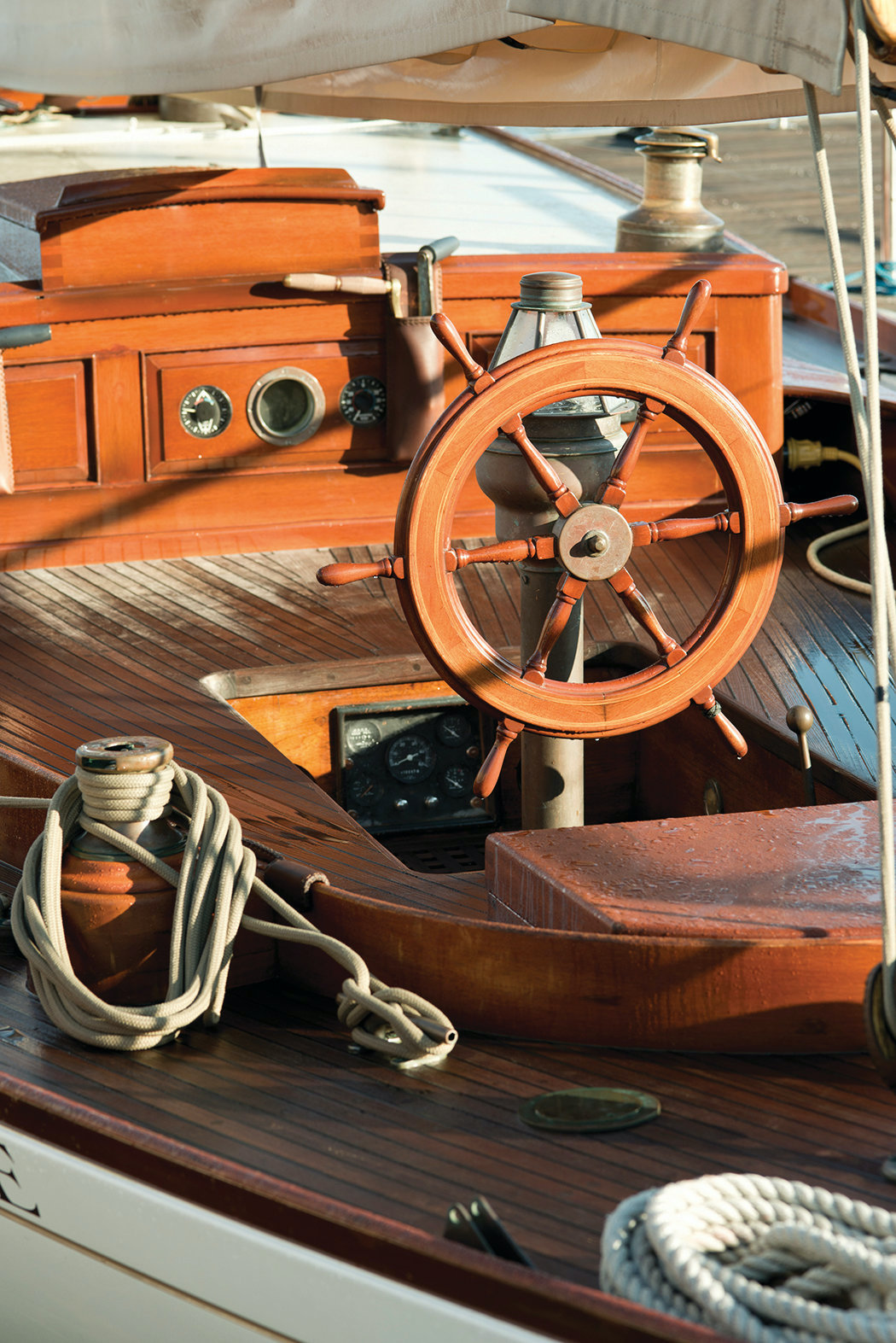I am the third generation of my family to build wooden ship’s wheels, and I can go to almost any harbor, anywhere, and see a wheel my family made. We’ve built all the wooden wheels for Edson Marine since at least 1965. I can tell by the turnings whether a wheel is one of mine or one built by my father or my grandfather.
A fine wooden wheel is often passed down from generation to generation, just like a finely crafted boat. It’s always rewarding to see that wheels created by my father or grandfather—or those I made early in my own career—have stood the tests of time and nature. I love seeing that a wheel I made 40 years ago is still structurally intact.
I’ve built close to 900 wheels for everything from 20' skiffs, to the Herreshoff Bounty–class yacht CATRIONA, to a U.S. Navy amphibious assault ship. I began making wheels at 14 years old, and I could only have learned the necessary skills by working with my family. By the time I started, my father and grandfather had recorded tables of offsets documenting the proportions used for wheels of various sizes.
I have taken the slightly different approach of working through consultations, sketches, and prototypes to determine exactly what the customer wants before actually making the wheel, including the one shown in the following photos.
 Nigel Pert
Nigel Pert
.
The creation of a wheel, including the one shown in this article, begins with a concept. I designed this one for Jon Wilson, the founder of WoodenBoat Publications, who envisioned a classic ship’s wheel for display purposes but built exactly as a fully functional one would be.
